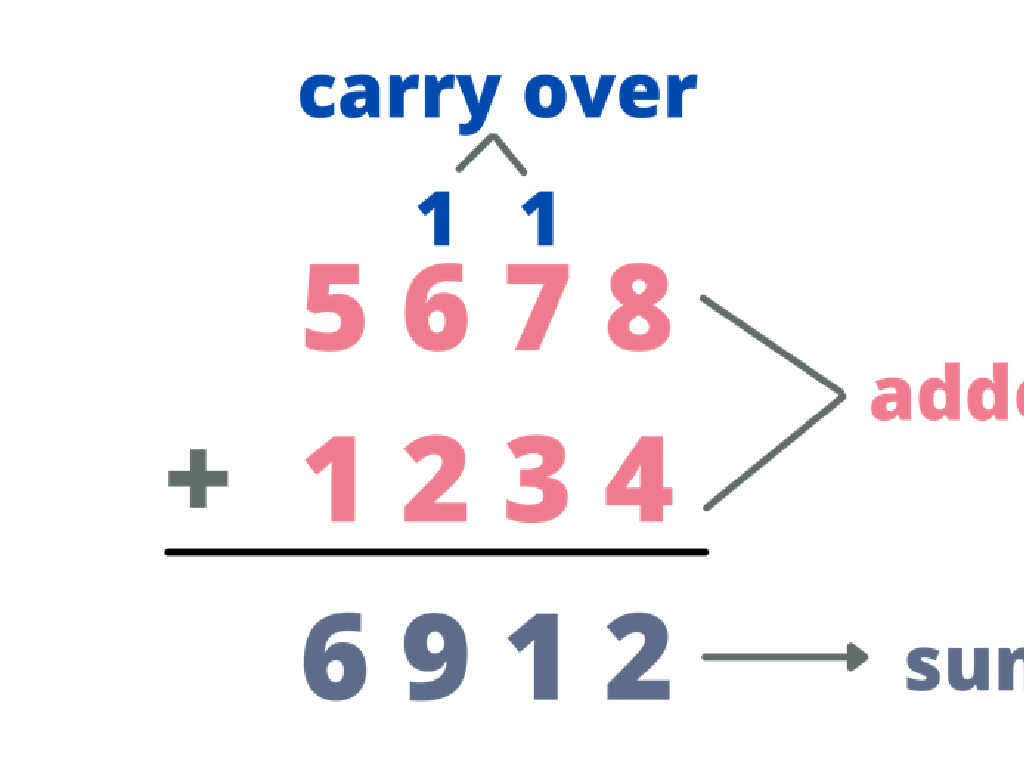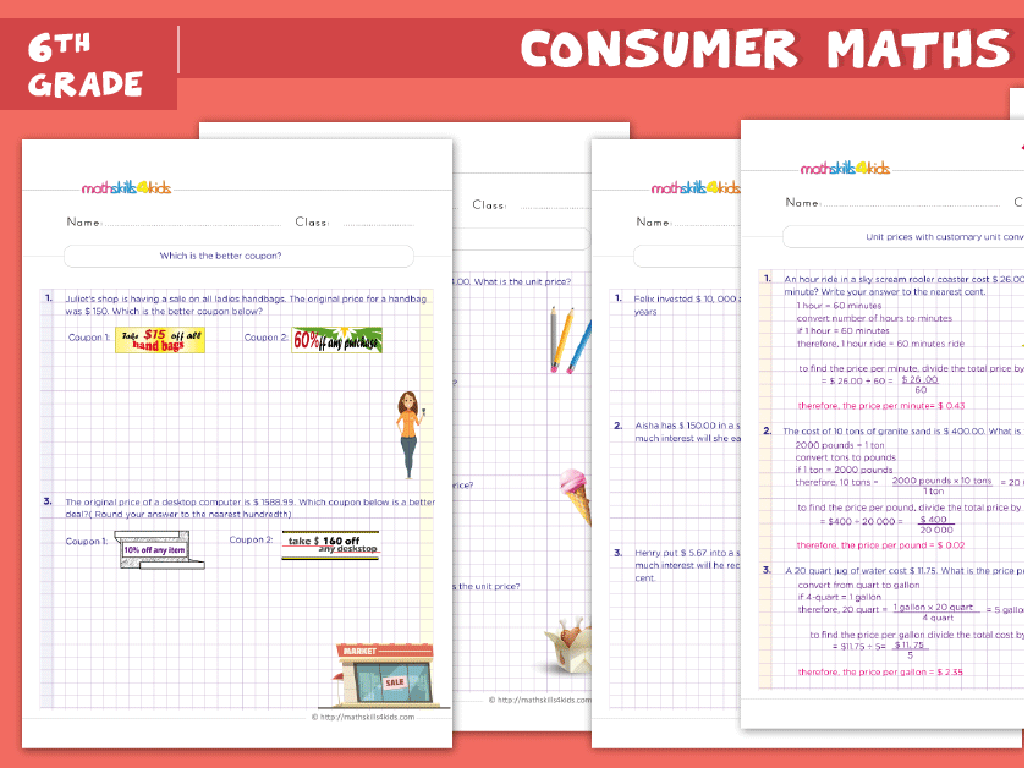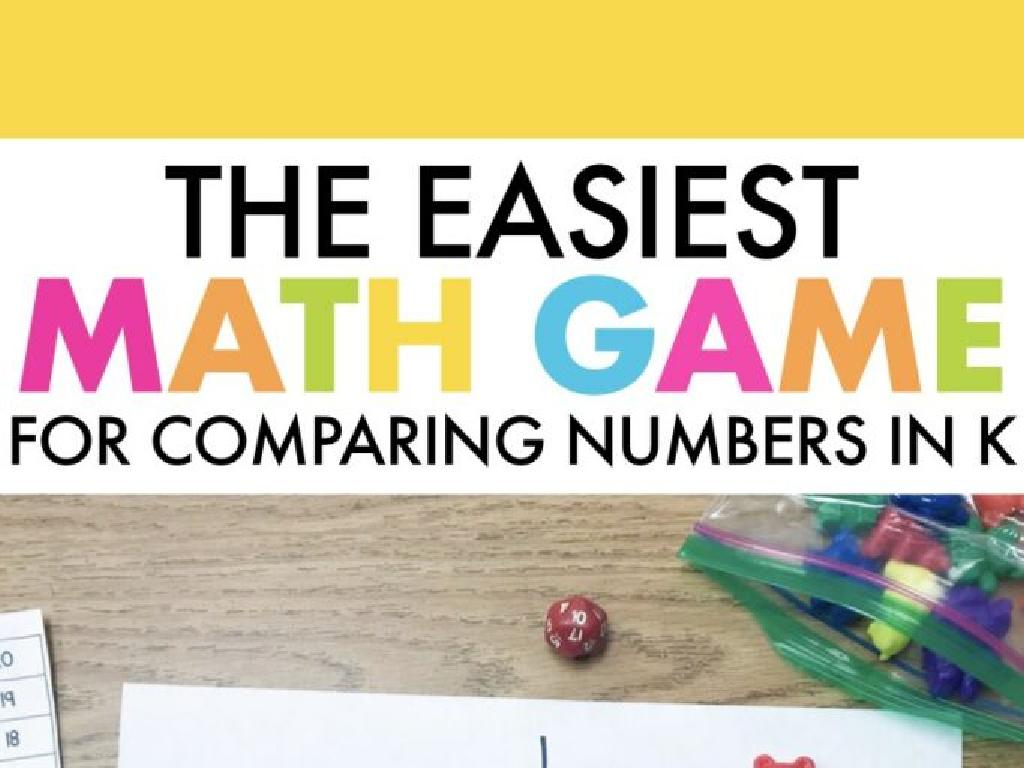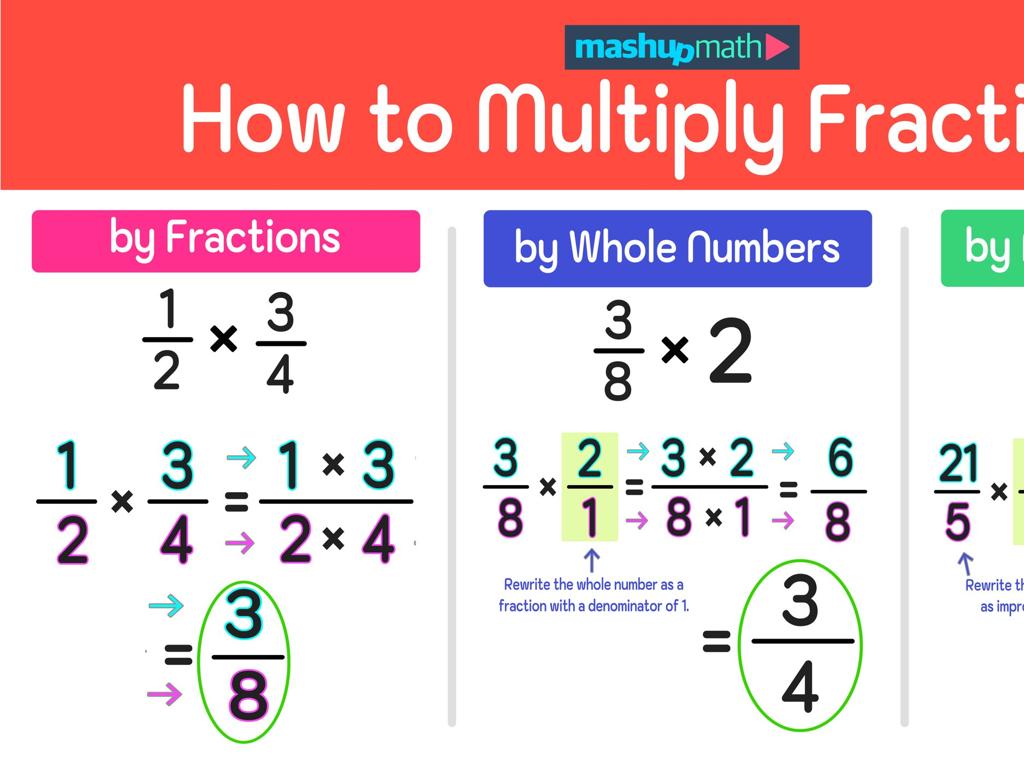Presidential Elections
Subject: Social studies
Grade: Third grade
Topic: Government
Please LOG IN to download the presentation. Access is available to registered users only.
View More Content
Welcome to Presidential Elections!
– How are leaders chosen?
– Why is voting important?
– Voting gives everyone a voice in how the country is run.
– What is a U.S. Presidential Election?
– It’s how we decide who our President will be for the next four years.
– Today’s learning goal
– Understand the election process and why it matters.
|
This slide introduces the concept of Presidential Elections to third-grade students. Begin by discussing how in a democracy, like the United States, leaders are chosen through elections, where adults vote for their preferred candidate. Emphasize the importance of voting as a way for citizens to have a say in government decisions. Explain that the U.S. Presidential Election is a process that happens every four years to select the President. The goal for today’s lesson is for students to learn about this process, understand its significance, and appreciate the value of participating in democracy. Engage the students by asking if they know who the current President is and if they’ve ever seen or heard about voting.
What is a President?
– The leader of our country
– Makes decisions for everyone
– Chooses what is best for people
– Lives in the White House
– The White House is their home
– Works in Washington, D.C.
– The capital city of the USA
|
This slide introduces the role of the President to third-grade students. It’s important to convey that the President is the leader who makes important decisions affecting the whole country. Highlight that the President lives in a special house called the White House, located in Washington, D.C., the capital of the United States. Use simple language to explain these concepts and consider showing a picture of the White House to make the information more relatable. Encourage students to think about what decisions they would make if they were President for a day to engage them further.
What is an Election?
– Elections choose our leaders
– Like picking a class captain, but for the country
– Every vote is equal
– Presidential elections every 4 years
– Just like we have class president
– Voting is a way to voice opinions
– Your vote tells what changes you want
|
This slide introduces the concept of elections to third-grade students, relating it to their understanding of choosing leaders within their own classroom. Emphasize that in an election, every person’s vote is important and has the same weight, just like every student’s opinion in class matters equally. Explain that the United States holds presidential elections every four years to select the country’s leader. Highlight the importance of voting as a means for people to express their opinions and influence government decisions. Use examples from school to make these concepts relatable, such as voting for a class president or making decisions as a group.
Who Can Vote in Elections?
– Real elections: U.S. citizens 18+
– Must be 18 years old and a U.S. citizen to vote in real elections.
– Class election: All students vote!
– In our mock election, every student in class can participate.
– Voting expresses your opinion
– When you vote, you tell others what you think and choose who you want to lead.
|
This slide introduces the concept of voting rights and eligibility in the context of U.S. presidential elections. Emphasize that in real-life elections, only U.S. citizens who are 18 years or older can vote. However, for the class activity, every student will have the opportunity to vote, mirroring the democratic process. Explain that voting is a fundamental way for people to express their opinions and influence who becomes a leader. Use this slide to prepare students for a mock class election where they can practice voting and understand the importance of participating in elections.
Stages of Presidential Elections
– Primaries and Caucuses
– Parties select their favorite candidate
– National Conventions
– Each party picks their official candidate
– General Election
– Everyone votes for who they want as President
– Electoral College
– A special group confirms the President
|
This slide introduces students to the four main stages of the U.S. Presidential election process. Begin with explaining Primaries and Caucuses, where party members vote for their preferred candidate. Then, discuss National Conventions, where parties announce their official Presidential candidate. Next, describe the General Election, when citizens across the country cast their votes for President. Lastly, clarify the role of the Electoral College, which officially counts the votes and elects the President. Use simple language and relatable examples to help students understand the election process. Consider creating a mock election to demonstrate these stages in a hands-on activity.
Understanding the Electoral College
– What is the Electoral College?
– It’s a special group that elects the President.
– Electors represent each state
– States have a set number of electors based on population.
– 270 electoral votes to win
– A candidate needs at least 270 out of 538 votes to become President.
– The role in presidential elections
– They officially decide who becomes the President.
|
The Electoral College is a fundamental component of the United States presidential election process. It consists of a group of representatives, known as electors, who are appointed by each state to formally cast votes for the President and Vice President. The number of electors from each state is equal to the total number of its Senators and Representatives in Congress, reflecting the state’s population. To win the presidency, a candidate must receive a majority of electoral votes, which is at least 270 out of the 538 available. This system ensures that each state has a say in the election proportional to its size. When teaching this concept to third graders, use relatable analogies, such as choosing a class president, to help them understand the importance and function of the Electoral College in simple terms.
Why Do We Vote?
– To pick the best leader
– Like choosing a class president, we choose our country’s president.
– To voice our opinions
– Our vote tells what we want for our country, like more playgrounds.
– Voting is our duty and right
– It’s important and special to have the chance to vote when we grow up.
|
This slide aims to explain to third-grade students the importance of voting in a simple and relatable manner. Voting is compared to choosing a class president, as it is a way to select the best person to lead. It’s also a means for citizens to express their opinions on how the country should be run, similar to how students might share ideas for classroom rules or activities. Emphasize that while voting is a responsibility, it is also a privilege that contributes to the democratic process. Encourage students to think about what changes they would like to see in their community or school and how voting could play a role in that.
Let’s Hold a Class Election!
– Electing our ‘Class President’
– Qualities of a good leader
– Think: honesty, kindness, and responsibility
– Writing your campaign speech
– Keep it short: What will you do for the class?
– Excited to hear candidates!
|
Today’s activity will help students understand the election process by holding a class election for a ‘Class President’. Encourage students to think about leadership qualities such as honesty, kindness, and responsibility. Students interested in running for ‘Class President’ should prepare a short speech about why they would be a good leader and what they plan to do for the class. This activity will not only teach them about elections but also about public speaking and democratic decision-making. Possible activities: 1) Students can create campaign posters. 2) They can give speeches to the class. 3) Classmates can ask questions to the candidates. 4) Hold a secret ballot election. 5) Discuss the importance of voting.
Class Activity: Mock Election
– Students present their speeches
– Cast votes using ballots
– Tally up the votes
– Count each vote carefully together
– Announce our ‘Class President’
– Celebrate our class democracy in action
|
This class activity is designed to simulate a real presidential election, giving students a hands-on experience with the democratic process. Begin by allowing students who wish to run for ‘Class President’ to give their campaign speeches. Provide guidance on how to create a short, persuasive speech. Next, have all students cast their votes using ballots to ensure the process is fair and teaches the importance of voting in private. Once the votes are cast, involve the class in counting the votes to demonstrate transparency and the counting process. Finally, announce the winner as the ‘Class President’. This activity not only educates students about elections but also encourages public speaking, the importance of voting, and the electoral process. Possible variations of the activity could include creating campaign posters, forming political parties, or discussing the responsibilities of the elected class president.
Election Wrap-Up: Every Vote Counts!
– Every vote is important
– Just like every crayon adds color, every vote adds a voice.
– Elections shape our future
– The president makes big decisions that affect all of us.
– Celebrating our ‘Class President’
– Let’s cheer for our own class leader and their new role!
|
This slide concludes our lesson on presidential elections by emphasizing the importance of each individual’s vote. It’s crucial to instill in the students that their participation in elections, even mock ones like electing a class president, is significant and has an impact on the collective future. Highlight how the elected president, whether of a country or a class, has the responsibility to make decisions and lead. Celebrate the election of the class president and discuss the qualities that make a good leader. This is also a good opportunity to reflect on the election process and what the students have learned about democracy and governance.






